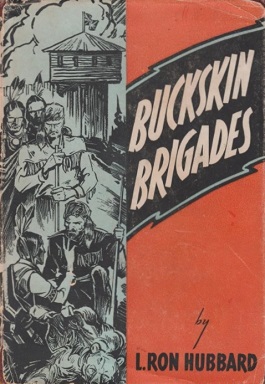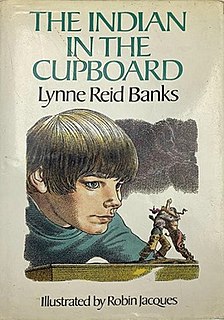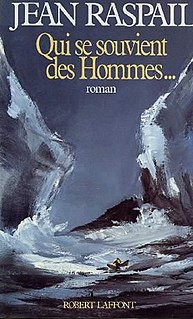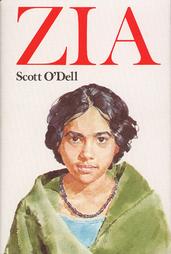 W
WThe Big Sky is a 1947 Western novel by A. B. Guthrie, Jr. It is the first of six novels in Guthrie's sequence dealing with the Oregon Trail and the development of Montana from 1830, the time of the mountain men, to "the cattle empire of the 1880s to the near present." The first three books of the six in chronological story sequence — The Big Sky, The Way West, and Fair Land, Fair Land — are in themselves a complete trilogy, starting in the 1830s and ending in the 1870s.
 W
WBuckskin Brigades is a Western novel written by L. Ron Hubbard, first published July 30, 1937. The work was Hubbard's first hard-covered book, and his first published novel. The next year he became a contributor to Astounding Science Fiction. Winfred Blevins wrote the introduction to the book. Some sources state that as a young man, Hubbard became a blood brother to the Piegan Blackfeet Native American tribe while living in Montana, though this claim is disputed. Hubbard incorporates historical background from the Blackfeet tribe into the book.
 W
WCaddie Woodlawn is a children's historical fiction novel by Carol Ryrie Brink which received the Newbery Medal in 1936 and a Lewis Carroll Shelf Award in 1958. The original 1935 edition was illustrated by Newbery-award-winning author and illustrator Kate Seredy. Macmillan released a later edition in 1973, illustrated by Trina Schart Hyman.
 W
WConquering Horse is Frederick Manfred's first novel in a five-volume series he called The Buckskin Man Tales. It tells a mythic story about Indian life on the Great Plains before the arrival of white people to the region. Film director/writer Michael Cimino and producer Michael Gruskoff attempted to adapt Manfred's novel to film, but the project, which was in development at Universal in 1970, was tabled in 1971 because of budget issues. At one point in 1979, he reached a deal with United Artists to make the film, under the condition Heaven's Gate was a hit. The movie bombed, so this never came to fruition either.
 W
WThe Education of Little Tree is a memoir-style novel written by Asa Earl Carter under the pseudonym Forrest Carter. First published in 1976 by Delacorte Press, it was initially promoted as an authentic autobiography recounting Forrest Carter's youth experiences with his Cherokee grandparents in the Appalachian mountains. However, the book was quickly proven to be a literary hoax orchestrated by Asa Earl Carter, a KKK member from Alabama heavily involved in segregationist causes before he launched his career as a novelist. Although claimed to be autobiographical originally, it is now believed that it is only based on Carter's fanciful but fraudulent family claims.
 W
WFaces in the Moon is written by Betty Louise Bell. It was published in 1994. Bell describes this work as "essentially autobiographical fiction, except I [Bell] have nine siblings and my mother was still alive when the book was written. Otherwise, it's pretty much from my life." The work describes Lucie Evers' homecoming and examines how she reestablishes connections with her past, her heritage, and her family.
 W
WGhost Warrior, Lozen of the Apaches is a 2002 historical novel by Lucia St. Clair Robson. This novel was the runner-up for the Golden Spur Award in 2002.
 W
WThe Horsecatcher is a 1957 adolescent historical novel by American author Mari Sandoz. The Horsecatcher was a Newbery Medal Honor Book in 1958. The book is "dedicated to the two great Cheyennes named Elk River, both council chiefs and peace men, one Keeper of the Sacred Arrows of the Cheyenne Indians, the other the greatest horsecatcher of all the High Plains".
 W
WThe Indian in the Cupboard is a low fantasy children's novel by the British writer Lynne Reid Banks. It was published in 1980 with illustrations by Robin Jacques (UK) and Brock Cole (US). It was later adapted as a 1995 children's film of the same name. Later books in the series were illustrated by Piers Sanford (later).
 W
WIsland of the Blue Dolphins is a 1960 children's novel by American writer Scott O'Dell, which tells the story of a 12-year-old girl named Karana stranded alone for years on an island off the California coast. It is based on the true story of Juana Maria, a Nicoleño Native American left alone for 18 years on San Nicolas Island during the 19th century.
 W
WMountain Man (1965) is a novel written by Vardis Fisher. Set in the mid-1800s United States, it tells the story of Sam Minard, a hunter/trapper living and wandering throughout Montana, Wyoming and Idaho, the book is separated into three parts: Lotus, Kate and Sam. The novel is largely a fictionalized retelling of the experiences of the real mountain man Liver-eating Johnson. The book was adapted for Sydney Pollack's film, Jeremiah Johnson (1972).
 W
WPigs in Heaven (ISBN 9780060168018) is a 1993 novel by Barbara Kingsolver; it is the sequel to her first novel, The Bean Trees. It continues the story of Taylor Greer and Turtle, her adopted Cherokee daughter. It highlights the strong relationships between mothers and daughters, with special attention given to the customs, history, and present living situation of the Cherokee Nation in Oklahoma. It is Kingsolver's first book to appear on the New York Times Best Seller list.
 W
WRamona is an 1884 American novel written by Helen Hunt Jackson. Set in Southern California after the Mexican–American War, it portrays the life of a mixed-race Scottish–Native American orphan girl, who suffers racial discrimination and hardship. Originally serialized in the Christian Union on a weekly basis, the novel became immensely popular. It has had more than 300 printings, and been adapted five times as a film. A play adaptation has been performed annually outdoors since 1923.
 W
WRide the Wind (1982) by Lucia St. Clair Robson is the story of Cynthia Ann Parker's life after she was captured during the Comanche raid on her family's fort. In 1836, when she was nine years old, Cynthia was kidnapped by Comanche Indians. This is the story of how she grew up with them, mastered their ways, married one of their leaders, and became, in every way, a Comanche woman. Her son Quanah Parker was the last Comanche leader to surrender. It is also an account of a people who were happiest when they were moving, and a depiction of a way of life that is gone forever.
 W
WTales of Zorro is a 2008 anthology of Zorro stories and is the first collection of original short fiction featuring pulp hero Zorro, edited by Richard Dean Starr and published by Moonstone Books in 2008. A second anthology, More Tales of Zorro, was published in 2011.
 W
WThere There is the first novel by the Cheyenne and Arapaho author Tommy Orange. Published in 2018, the book opens with a prologue essay by Orange, and then proceeds to follow a large cast of Native Americans living in the Oakland, California area. The characters struggle with a wide array of challenges, ranging from depression and alcoholism, to unemployment, fetal alcohol syndrome, and the challenges of living with an "ambiguously nonwhite" ethnic identity in the United States. All of the characters unite at a community pow wow and its attempted robbery.
 W
WWho Will Remember the People... is a 1986 novel by the French writer Jean Raspail. It tells the history of the Alacalufe people, a largely extinct South American tribe, throughout the centuries. The two main characters reappear in each generation. The native name of the Alacufs is "Kaweskar", which means "the people". Raspail had met members of the tribe in the early 1950s which had made an impression that stayed with him.
 W
WGerald Robert Vizenor is an American writer and scholar, and an enrolled member of the Minnesota Chippewa Tribe, White Earth Reservation. Vizenor also taught for many years at the University of California, Berkeley, where he was Director of Native American Studies. With more than 30 books published, Vizenor is Professor Emeritus at the University of California, Berkeley, and Professor of American Studies at the University of New Mexico.
 W
WYellow Back Radio Broke-Down, by the African-American writer Ishmael Reed, is a satirical take on the traditional Western. It is Ishmael Reed's second novel, following The Freelance Pallbearers (1967), and was first published in 1969. It tells the story of the Loop Garoo Kid, an African-American cowboy who practices the religion of Neohoodooism, and describes his struggle against established religion and cultural oppression.
 W
WA Yellow Raft in Blue Water is the debut novel of author Michael Dorris, published in 1987. It tells the story of three generations of Native American women: Rayona, who is half African-American, her mother Christine, and Christine's mother Aunt Ida. The story is told in three distinct sections, one for each woman. Throughout the book, themes of family, identity, and heritage are highlighted and examined.
 W
WZia is the sequel to the award-winning Island of the Blue Dolphins by Scott O'Dell. It was published in 1976, sixteen years after the publication of the first novel.